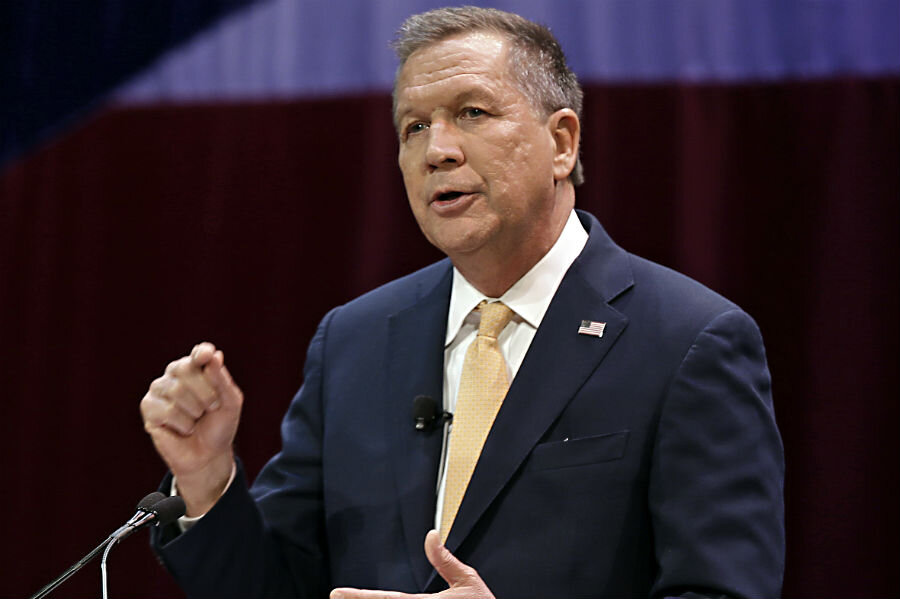Medical marijuana is now legal in half of US states
Loading...
Ohio became the 25th US state to legalize medical marijuana on Wednesday, when Gov. John Kasich (R) signed legislation that will permit people diagnosed with certain chronic conditions to use the drug in vapor form, while still barring them from smoking it or growing it at home.
Now that half the states in this country, as well as Washington, D.C., and Guam, allow medical marijuana, according to statistics from the National Conference of State Legislatures, some analysts wonder whether the tide is becoming unstoppable.
Whatever the future holds for the rest of the nation, the pace of change has both proponents and detractors. In Ohio itself, Republicans and Democrats alike were divided in offering support and opposition to the bill when it passed through the legislature last month.
The bill had been dealt with expeditiously in an attempt to head off a ballot question proposed for the fall. The main group backing that ballot, Ohioans for Medical Marijuana, abandoned their efforts after the bill passed through the legislature, and they expressed their exuberance Wednesday at the announcement of Governor Kasich's signature.
"This is a joyous day for the thousands of Ohioans who will finally be able to safely access much-needed medicine," said spokesman Aaron Marshall in a statement. "As we continue this movement to bring medical marijuana to all Buckeyes who need it, we will remember today as a huge step forward."
The law will take effect in 90 days, but the medical marijuana program is not expected to be fully operational for another two years.
There are parameters and caveats within the legislation. For example, employers will still be able to maintain drug-free workplace policies and implement drug-testing. Towns will be at liberty to limit the number of dispensaries, or seek to ban them altogether. And no dispensary will be permitted within 500 feet of schools, public libraries, churches, parks, or playgrounds.
Debate surrounding the wider issue of medical marijuana continues to swirl, with some arguing that measurable benefits are already evident.
A study by Colleen Barry, a professor at the Johns Hopkins Bloomberg School of Public Health, for example, found that opioid overdose deaths fell by 25 percent on an annual basis following the passage of medical marijuana laws, compared with states that still had bans.
"Could medical marijuana be a safer alternative to opioids for chronic pain management?" Dr. Barry wrote in an op-ed for The New York Times. "Our study opened the door to that possibility, but it did not establish the causal mechanisms by which marijuana might influence overdose deaths and was conducted before the massive surge in heroin use and related overdose deaths."
Concerns remain about usage and side effects, however, as Molly Jackson reported for The Christian Science Monitor, with researchers suggesting that problems are bound to arise in such a "quickly-growing and little-regulated field":
But legalization is just one step to reaching many medical marijuana proponents' goal: another treatment option. And safety regulations have lagged far behind the drug's state-to-state progression, leaving many patients to wrestle with questions about usage and side effects. These are issues Americans usually expect pharmacies, manufacturers, and government regulators to have answered before a legal product is sold, including how much to take, when, and how.
This report contains material from the Associated Press.








